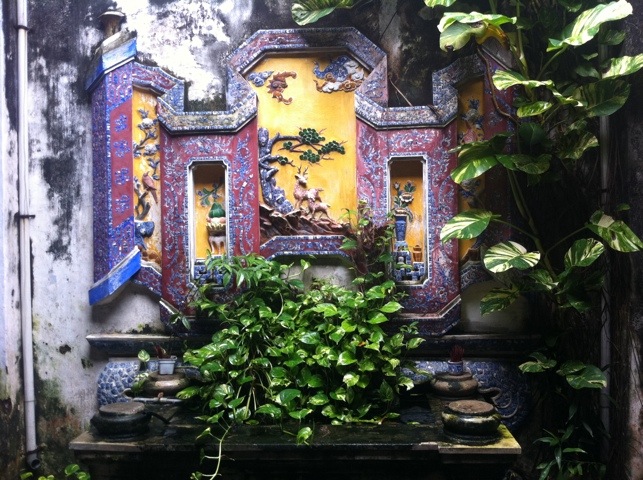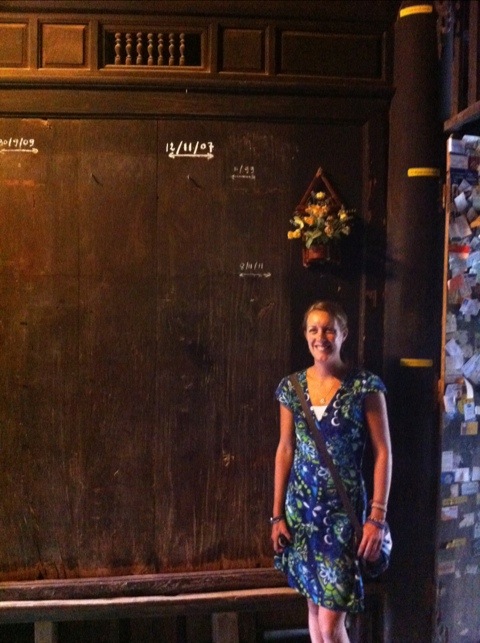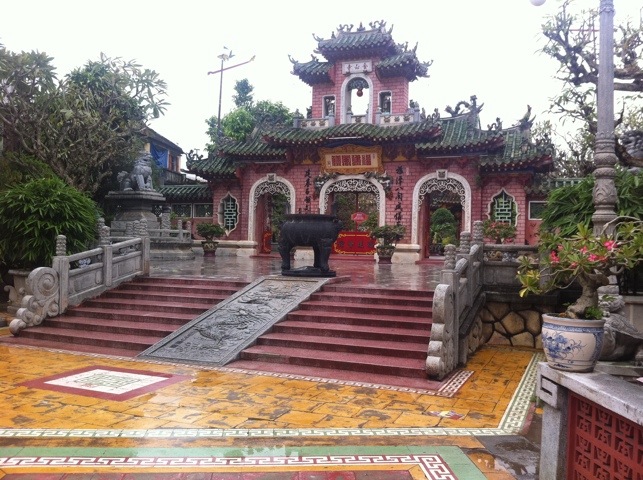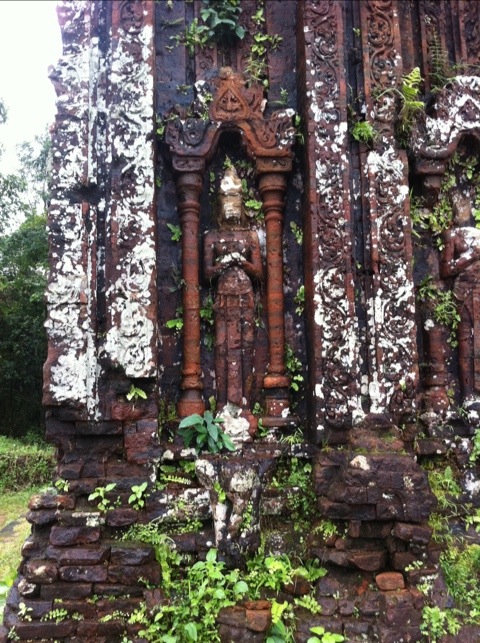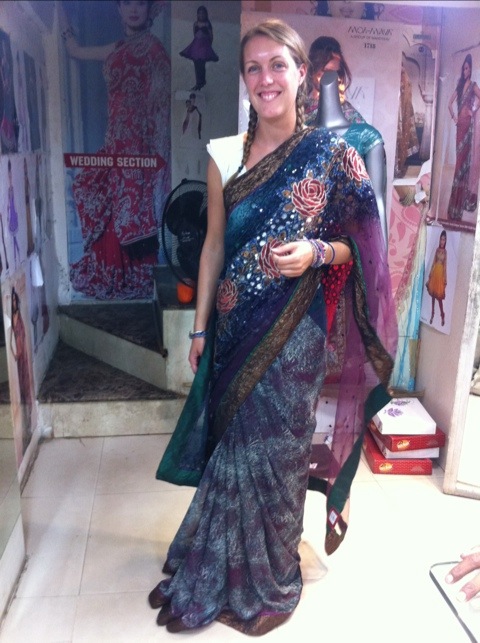Arriving in Hoi An, Laura pointed out that it seemed we’d taken taken a wrong turn and ended up in Disneyland.
The streets were free from traffic, and full of groups of white tourists wandering round taking photos. All the buildings were beautifully maintained, a fabric of mustard yellow walls hemmed in by dark wooden beams, with dangling red chinese lanterns. There were street vendors on each corner, offering drinks and snacks – and ponchos when the downpour started. Even the locals seemed to be in costume (although not cartoon style), with far more of the Vietnamese cone bamboo hats than we’ve seen elsewhere. In little squares on street corners there were ‘cultural performances’ being put on for the tourists. Oh, and there was piped music playing in the streets, a background of classical strings and asian singing. Bizarre! Fortunately, the town’s savings grace was in what it was missing from Disneyland: no McDonalds, fairy castles, or Mickey Mouse – although there were a few rats around!
The town is a UNESCO world heritage site, an ancient port and former trading gateway to much of South East Asia’s interior, sitting on the banks of a large river estuary. It frequently floods as typhoon waters flow downstream from the nearby central highlands; our friend Sarah was here a week ago when the three streets nearest the river (most of the old town) were all under water – you can see the high water mark above Laura in a house we visited in the photo below!
It may be quaint and twee and
somewhat of a facade for foreigners, but we did quite like the old part of town, with its interwoven patchwork of Chinese, Japanese and Vietnamese influences that had stemmed from distant traders settling permanently. It’s visually stunning, there’s a mouthwatering range of food, and it was wonderful to escape the drone of motorbikes we’ve had elsewhere – at times, you could hear a pin drop.
There’s also a good smattering of historic sites to visit, the most famous being the Japanese Bridge. The story goes that a Japanese earthquake had been attributed to a dragon with its head in India, tail in Japan, and heart in Hoi An. Coincidentally also providing the opportunity to span the river, the bridge was primarily constructed to pin the heart of the dragon down and prevent further catastrophes. I just hope the slightly dilapidated state of the bridge today was not connected with the disaster earlier this year!
Elsewhere in the town are a set of five Chinese Assembly Halls, one for each of the different minority groups settled in the town. Going round a couple of these gave us a lovely flashback to our time in Beijing, with such glorious reds and golds and wonderful painted dragons on rooftops. They also had something striking we haven’t seen anywhere before – an array of huge coils of incense suspended from the ceiling, each with a memorial card hung inside. These were maybe a metre tall and a metre in diameter, very slowly filling the space with sweet smoke in memory of those that have passed away.
We also popped round an old house in the city, where we came across a ‘Confucius cup’, which preaches moderation by only functioning when less than 80% full. I’m not sure how well it would go down in pubs back in the UK though!
Another thread of history running through the area is that of the Champa dynasty and the holy site of Mỹ Sơn (pronounced mi sun). An expansive set of Hindu towers and temples, it was occupied by the Viet Cong during the American war (as they call it here, ‘Vietnam War’ doesn’t make much sense without context). As with much of Vietnam, this meant it was victim to heavy B52 bombing, and little of the site is still intact today. The ruins were interesting to look round, even if only as a glimpse of what once was – and to get some great photos of temples overrun by greenery.
Finally, the city’s the place to come in Vietnam for personal tailoring, with a seam of shops offering a bewildering range of suits, coats, dresses and skirts at bargain prices. It felt like we got one of everything! Over the course of a hectic afternoon, Laura got dresses and a skirt, I got a suit, and we got some trousers and a coat for my sister. Each of these was custom made to order, some by the next day, and some the same day. Amazing!
I’ve never really been to a tailor before. It turns out there are a lot of questions you have to answer if you want a suit, or at least you need a Laura to help deflect them. Styles, colours, material, pleats, vents, pockets, piping, lining – and that’s before the 101 different dimensions for fitting! Anyway, we were both pretty pleased with the result – you can see us modelling our new clothing below. Feeling much smarter, we set off for Hue, safe in the knowledge that at least we’ll have some clean clothes when we finally make it back home!
Simon

